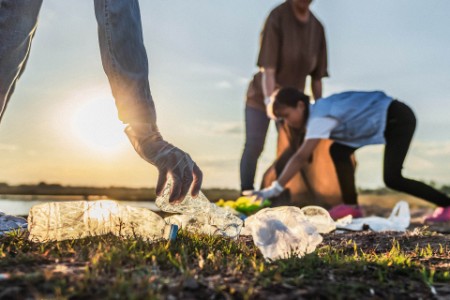Sustainability is more than a simple buzzword. Informed consumers have become concerned about the products they purchase as well as their impact on the environment.
In response, most brands are starting to share this concern or actively taking steps to promote environmentally friendly products and sustainability.
Adding to consumer sentiment, in 2017 the European Commission adopted a plan for a circular economy that included the goal of all plastic packaging being reusable or recyclable by 2030. For consumer-packaged goods (CPGs) companies within the EU, it will be essential to adhere to international and country-specific requirements while following their own strategic sustainability road map.
Frequently used consumer goods such as food or personal care items have a major impact on the sustainability footprint of companies and the amount of plastic waste they produce. To reduce this footprint and transform these products, current packaging needs to be replaced with cost-neutral packaging solutions, complying with local product and sustainability regulations.
To achieve sustainability targets efficiently, companies should identify products for which single changes result in a large decrease in their overall use of unrecyclable plastic. For companies that want to achieve their long-term sustainability goals, this requires continually evaluating their portfolio and rapidly implementing newly identified materials into their innovation process.
Consequently, system transparency, high-quality product data and continuous portfolio evaluation will be critical factors for a successful transformation.
Key questions to be considered for a sustainable product portfolio transformation in 2021:
- What is the company’s strategic, sustainability road map, and what are the product portfolio priorities?
- What are the present and future consumer behavior and their willingness to pay?
- How is the product positioned against competitor specifications and pricing?
- What are the operational costs of goods compared with the strategic sustainability targets?
- Which alternative, cost-neutral, circular recycling solutions are available for the product?
Our understanding of sustainable product portfolio management
The product portfolio must be assessed as a whole based on strategic targets, the balance of the portfolio and the maximum value. When improving a portfolio’s overall sustainability, it is important to review the different types of packaging in relation to each other and to highlight the materials with the most prominent negative effects on the environment and on consumer health. Identifying packaging materials that are currently non-recyclable and that are produced in high volumes is key.
In a second step, CPG companies need to analyze single products in terms of production volume, amount of plastic packaging, type of plastic, product complexity, margin and customer satisfaction. Higher production volumes and a higher amount of plastic packaging usually point to a higher potential impact on sustainability, while high margins and low complexity provide more flexibility and room for alterations.
Simultaneously, it is impossible to neglect business requirements. Before replacing any packaging material, consumer goods companies must determine whether a replacement can be sourced sustainably, whether consumers are willing to pay for a potential cost increase or whether cost neutral solutions can be found. Such considerations in advance of portfolio adjustments enable companies to create market opportunities toward new, circular business models.
Next to a general assessment of a portfolio’s profit and cost distribution, complexity analytics can provide a comprehensive overview of a companies’ packaging, how often it is being used throughout the entire portfolio, in which geographic regions, what the underlying substrates are and whether they are recyclable.
An additional reduction of costs can be achieved through innovation platforms that allow product designers to simulate and compare the sustainability performance of various prototypes or concepts and to make design decisions accordingly.
Once a packaging has been identified, several options exist to decrease its negative impact:
- Substrate substitution: more recyclable or compostable solutions replace non-recyclable solutions.
- Design change: innovation confirms that there is less packaging waste or packaging is easier for a consumer to recycle.
- Recycling process improvements: investment in recycling infrastructure supports circularity of packaging materials.
- New substrate innovation: new materials are developed that are easier to recycle or biodegradable.
Problematic influences on sustainable product portfolio management
Supported by media attention to the environmental damage caused by consumer waste, expectations from investors, employees and consumers toward sustainable products are increasing. Nevertheless, an open debate in the industry continues about whether being cost-neutral is the best case for a sustainable product portfolio and if innovative solutions will be required to develop bulletproof business cases.
Moreover, sustainable solutions require a consideration of other environmental factors such as reducing carbon emissions, resource consumption and a reduction of food waste through extended shelf life. Plastics are most effective in this regard and will be required to create sustainable packaging solutions; therefore, plastic reduction or replacement is not the answer to every environmental concern. Companies will have to invest in the development of new substrates, recycling processes and more efficient designs.


